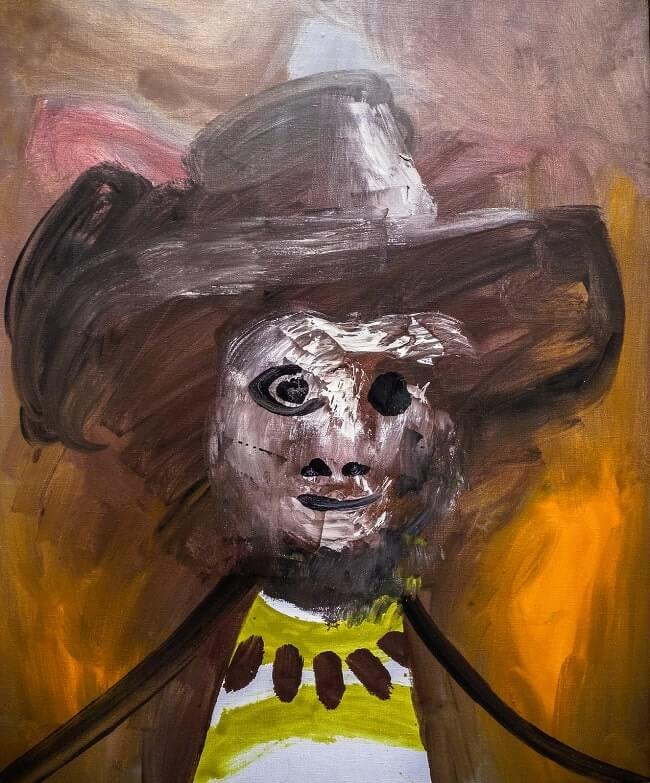Bust of a Man in a Hat, 1970 by Pablo Picasso
Although Bust of a Man in a Hat, painted on 23 November 1970, appears to be extremely simple in the structure, it shows lively brushwork and allows of various
interpretations for its meaning. Thanks to the lavish use of orange-red tones, the tone looks warm but at the same time simultaneously menacing, because few
of the colors are uninfluenced by black.The utilization of paint reaches from coating, as in a few ranges of the foundation, to impasto, as in the district of the face.
The effect created by this mysterious picture is at immediately disturbing and arresting. What are these eyes that hold us enchanted as they gaze so intently from the
canvas? Duncan recalls the first posthumous exhibition at Avignon in 1973, which included this work: "Picasso's old friend and ceramist, Georges Ramie,
recognized another, chilling face, of a black eye-patched Cavalier; the work of a man who had calmly stared straight into the unwavering gun barrel - then painted exactly what he saw."
The most spectacular interpretation c the subject identifies it as a symbolic self-portrait of the artist at the end of his life. Gert Schiff expressed:
The head appears to materialize out of hell-fire and is simultaneously prepared to be consumed by it anew. Was Picasso alluding to his ever-incandescent vital energy, or was he sardonically portraying himself as someone who reappears to those who have survived him?"





















